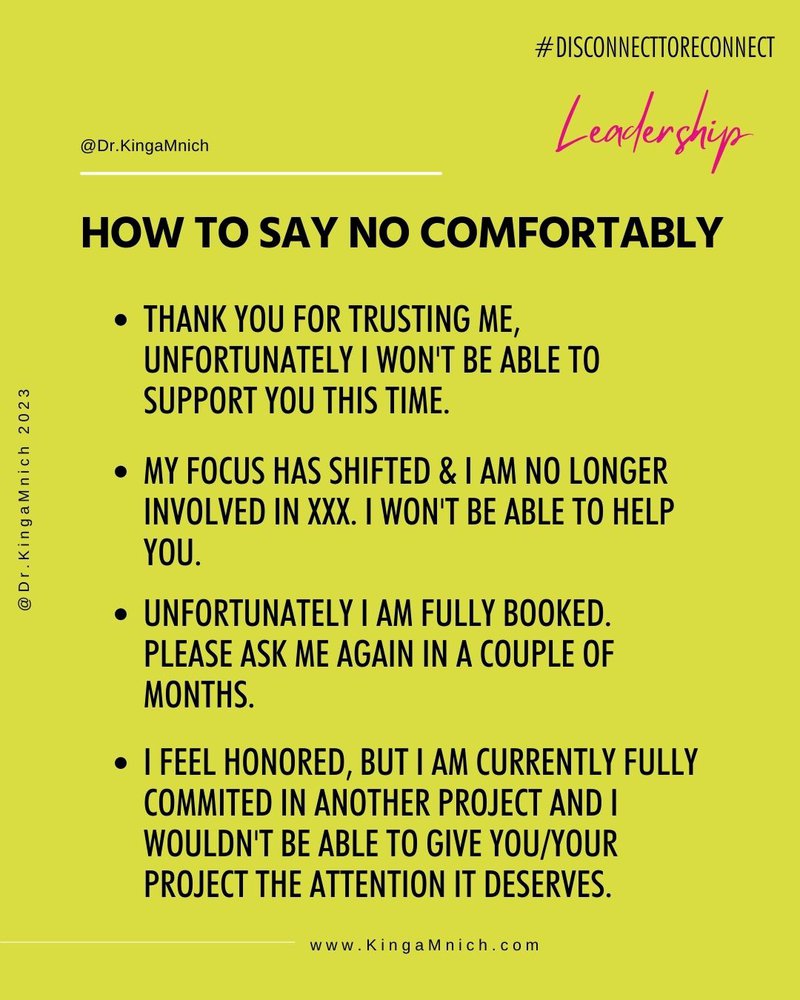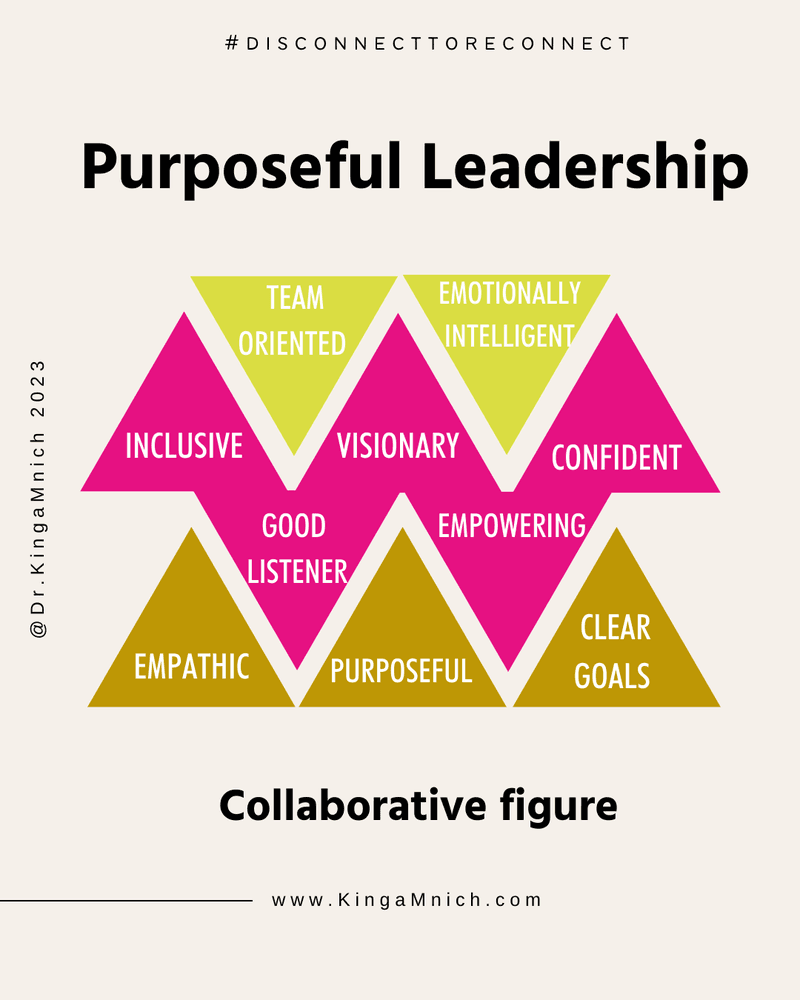Finally, women across the world are increasingly taking on leadership roles across various industries. However, as women navigate their way through leadership positions, it becomes crucial for us to establish strong boundaries. Setting boundaries is not only a key aspect of maintaining work-life balance, but it also enables you as a leader to assert yourselves, foster healthy relationships, and drive meaningful change within your organization. In this article, we will explore the importance of setting boundaries for women in leadership roles and provide practical strategies to help you establish and maintain these boundaries effectively.
The Significance of Setting Boundaries in Women’s Leadership
Women have been taught over centuries to place everyone’s needs before their own. That’s why building a career for yourself looks different than it does for the men in your immediate surrounding. Generally, this is not a problem, except that the current professional environment still doesn’t accompany the different needs different gender roles require of individuals. On top of that, many topics are still taboo, and I come across women on a regular basis that are afraid to speak about specific needs because they fear being portrayed as weak or unfit for their position. Which leads to a higher risk for burnout, a general lack of joy, a feeling of emptiness, and a decrease in critical thinking abilities.
1.1. Breaking Stereotypes and Challenging Gender Norms through boundary setting
When women step into positions of power and authority, they defy the long-held perception that leadership is solely a male domain. This transformational shift not only empowers women but also reshapes societal attitudes toward gender roles, paving the way for greater gender equality and inclusivity.
Traditional leadership is marked by not only typical male role expectations, hierarchical structure, focus on stability and predictability, and emphasis on authority and formality but also limited adaptability to change. It is important to note that traditional leadership styles and characteristics are evolving, and contemporary leadership theories and practices challenge some of these traditional notions. More modern leadership approaches often emphasize collaboration, inclusivity, empowerment, and adaptability to meet the demands of dynamic and complex environments. But nevertheless, they don’t account for the needs that modern women have.
And that’s when boundary setting comes into place. Contrary to the belief that boundaries make you less attractive, they actually help to create a positive and empowering work environment. Setting boundaries helps you not only to create self-respect but more so it sets precedence on how people respect you and your time. It shows that you, as a woman, have the ability to lead, guide, and steer the ship. Because if you can set boundaries to protect your own time, integrity, goals, and values, you surely can move a company in the right direction. And isn’t leadership exactly about that?
1.2. Maintaining Work-Life Balance
We are all well aware of the obstacles that we face when it comes to maintaining a work-life balance. This in itself is a very traditional way of building a career. Keeping your work and life apart is just simply no longer possible, and I think that for many, not even a priority. Especially if you are passionate about what you do, it becomes a problem when you are hired because of who you are and what you do but don’t get the freedom to foster your strength and slowly (because of a lack of boundaries) have to cave in and become a different person. The more you can be yourself, the more you can stay in the flow while being at work, which then doesn’t even feel like work.
A lot of the work-life balance nowadays is not so much about setting a barrier between these two, but rather ensuring that you are not exposed to unnecessary stress and create enough time to recharge on all levels:
– Mind-Body-Connection (time to exercise and keep your body and mind healthy)
– Spend quality time with friends and family.
– Time to be lazy and feel bored again (When have you experienced boredom last time?)
– Time to reassess your goals and let your mind be creative again.
That’s why setting boundaries truly starts with yourself. You need to know what your boundaries are and what you need to function efficiently. That’s when you will become good at clearly communicating what you need and how others can a. support you in achieving these goals and b. create value instead of draining your energy.
Practical Strategies for Setting Boundaries
I know it is easy to say set boundaries, but if you have never been exposed to healthy boundaries, it can be one of the most difficult challenges.
What situations and memories make you happy? How do these memories make you feel? Which situations and outcomes do you want to foster more? What priorities do you have in life, and what values are important to you? Setting boundaries starts which knowing what is important to you and what makes you happy.
2.1. Define Your Values and Priorities
Let’s say you have been playing for years every Tuesday squash with your best friends. But you quickly realize that with your new role, it becomes almost impossible to leave the office to make it on time. There are just too many people that come with questions to you after 4 pm. Three weeks into the new role, you realize that something isn’t feeling right, but you continue on. This new habit slowly turns your excitement into resentment and into additional pounds. Or you simply block out your Tuesday from 4:30 pm and set a precedent. Your weekly squash meet-up is not only a healthy habit, but it is also your way of engaging in healthy competition, which in turn helps you to be confident. And confidence and healthy competition are 2 important characteristics of effective leaders.
Another example could be your daily school pick-up. A female CEO told me once that she knew that her children didn’t need her to be a full-time mom but that she needed at least 3 weekly “catch-up meetings” with her children when everything was still fresh in her mind. And so, no matter what, she would do exactly that pick up her children at least 3 times a week from school and stay this way connected to everything that mattered to them. This was so important to her that she negotiated it right from the start of the hiring package. She explained to me that she was not only responsible for ensuring that each employee would support the success of the company but that she was also responsible for ensuring that her children would support the success of our society. Perfective alignment of values. Why would anyone question her integrity?
2.2. Communicate Clearly and Assertively
Communicating assertively and clearly is not a male trade. Women are not born with the inability to say out straight what they want and need. We are being raised to leave space to change our minds to benefit others. Too often, are we being portrayed as indecisive, starting with the whole myth of hunters and gathers, like hunting is more important than gathering? Imagine a world where women would not have known which berries are poisonous. Immediately the tasks would have received priority. And maybe that’s why most of our work is unrecognized because we work seamlessly and flawlessly (and too often away from the spotlight).
2.2.1 Tips on how to communicate
First of all, 2 things can be equally important as long as you are able to take out the additional adjectives when speaking about it. Describing your needs as a flower bouquet that includes 6 tropical flowers non-one has ever heard of, unfortunately, showcases an inability to understand who you are communicating to. Remember, communication is not so much about what you are saying but what the person in front of you understands. Imagine the CEO saying, “It would be beneficial to me if I could pick up my children at least 3 times a week from school, and it would mean a lot if that can be arranged.”
Let me break this down: A. Beneficial in which regard? To the company? Certainly not. It would mean a lot? A lot of what and who else should care about it? And who is supposed to arrange that? That is so much space for error in this request.
Instead, this was a non-negotiable to her. Of course, there are emergencies if you are running a company. But rather be on the safe side, ask for what you need from the start. And make what you don’t want rather an exception than the norm, which needs can easily turn into resentment.
I know that this one is often easier for women from northern European countries. Maybe find a peer, a mentor or a companion from a different country and ask them about how they do things. Learn from another.
2.3. Learn to Say No as Part of Setting Boundaries
Maybe, later, perhaps, not right now, I will look at it, or any similar term is not a NO. When you’re able to say no, you’ve figured out what you DON’T want. Congratulations! You’ve crossed the first hurdle of finding out what you DO want and what you need to achieve it. This deserves respect and appreciation. (This is also one reason we should be saying no more than yes.)
But how do we learn to say no?! First, remind yourself of your priorities regularly. Write them down. Look at them every day. When you are offered an opportunity, consider how (or if) the opportunity fits with your priorities. Second, keep a list of possible polite ways to say no. Use phrases that feel comfortable to you, and be sure you’re being direct. Remember to be respectful toward the other person. It is far better to say no than to say yes when you know that you might not be able to do it.
Here are some examples of ways to respectfully say no:

– “No, thank you.”
– “While that sounds great, I can’t.”
– “Now isn’t a good time.”
– “Nope, not today.”
– “I’m not able to help right now.”
Greg McKeown offers, in his book Essentialism: The Disciplined Pursuit of Less, multiple ways of saying no in his selection “The No Repertoire.” You can also read a summary here.
2.4. Delegate and Collaborate
Delegating and collaborating effectively really starts with understanding the organizational dynamics, as well as the individual skills people have. Unfortunately, having conversations with individuals won’t always give you the information you need. The desire to get promotions and step into positions that pay better hinders people from having an objective opinion about their skills. Kim Scott has some excellent examples of failed leadership in this regard in her book “Candid Candor” (really worth reading).
6 Steps to Become a Better Delegator while setting boundaries
Here are my favorite 6 steps that can help you to become more comfortable with delegating and creating a collaborative environment in which it is much easier to set boundaries.
- Assess Strengths and Delegate Accordingly: Understand the strengths and capabilities of your team members. Delegate tasks and responsibilities based on their expertise, interests, and development opportunities. Consider looking at Strength Test Finder created by VIA Insitute for Character.
- Foster an Inclusive and Supportive Environment: Create a work culture that values diversity, inclusion, and collaboration. Encourage all team members to contribute their ideas, perspectives, and talents. Celebrate achievements and promote a sense of camaraderie, trust, and mutual respect among team members. This also allows to learn more about everyone and see what they are good at.
- Set Clear Expectations and Goals: Clearly define the objectives, timelines, and desired outcomes for delegated tasks or collaborative projects. Establish expectations for quality, communication, and accountability. Provide the necessary resources, tools, and support to enable team members to meet their goals successfully.
- Empower and Trust Your Team: Empower your team members to make decisions and take ownership of their work. Trust their abilities and judgment. Offer guidance and support, but avoid micromanagement. Encourage autonomy and foster a sense of responsibility and accountability.
- Encourage Collaboration and Teamwork: Promote a collaborative mindset and encourage team members to work together, share ideas, and leverage each other’s strengths. Facilitate cross-functional collaboration and create opportunities for knowledge-sharing and skill development.
- Seek Mentorship and Networking Opportunities: Build a network of mentors, both within and outside your organization, who can provide guidance, support, and insights. Seek opportunities to connect with other female leaders and professionals in your industry. Learn from their experiences and leverage their expertise. There are several organizations, such as Chief and Ellevate.
2.5. Establish Healthy Work-Life Boundaries
One of my favorite tools to create a separation between my endless work to-do list and the life that recharges me and my creativity are two phones. I know some people are not a big fan of it. But I simply don’t have my work emails or texts on my joy phone. I leave my work phone on my desk after 5 pm. That is my cut-off time. That can look very different for you. A friend of mine turns off her work phone while still being available to friends on her joy phone.
Another great way of structuring your day is to simply not check emails before 10 am. This gives you time to drink your morning tea or coffee without letting your mind spin. It gives you the ability to be present and prioritize personal well-being for a few hours every day.
This part is mostly connected to managing yourself through setting healthy boundaries, which eventually become habits.
Section 3: Overcoming Challenges and Resistance
Women in leadership positions, as you might have already experienced, may face various gender biases and stereotypes when setting boundaries in the workplace. My best advice for this is to stay the course (that’s why networks and mentorship is so important for women, you need an outlet to vomit all of it out in a safe space).
3.1. Addressing Gender Bias and Stereotypes
Of course, speaking up and pointing out biases and stereotypes is the best course of action and the only one to eliminate them.

Here are some common challenges they may encounter:
- Perceived Lack of Assertiveness: We often face the stereotype that we are less assertive or decisive compared to our male counterparts. When setting boundaries, your assertiveness may be viewed as aggressive or bossy, leading to pushback or resistance from others.
- Double Standards: You may face higher expectations and scrutiny when it comes to setting boundaries. You might be perceived as “too tough” or “too soft” depending on your approach, leading to a situation where your actions are judged more critically than those of male colleagues. Let them judge!
- Likability Bias: Yep, women are still expected to be nurturing, accommodating, and focused on maintaining harmonious relationships. Setting boundaries that assert your needs or prioritize the organization’s goals can be seen as contradicting these expectations and may lead to negative perceptions. Your colleagues don’t need to be your friends. Stay true to your values. They will eventually receive the message.
- Stereotype Threat: This describes our fear of confirming negative stereotypes associated with our gender. Don’t allow it to make you hesitant to set clear boundaries or assert.
- Gendered Expectations of Caregiving: Sorry, but whoever judges you for having a career and children needs a very strong reminder of where their place is and that their opinion is neither asked nor appreciated. Sometimes we need to say goodbye to some people simply.
- Underestimation of Expertise: Yes, you may encounter biases that underestimate your knowledge and expertise in your field. But you are where you are because of your knowledge. Don’t let it bother you.
Stick to the course
Set your boundaries. The more assertive you are, the faster these biases will resolve. Biases become a problem when you allow space for negotiation. It’s like with a small child, first, you say eat your plate, and 45min into the I don’t like broccoli game, you give in. It’s not that your child undermined your authority; you did. I know it isn’t easy, but you are not alone on this journey.
3.2. Leading by Example
We have to lead by example. It’s time. Don’t be resentful. Instead, use humor. The cooperative and economic world needs us. Remember this. It is impossible to run the world without women. We not only hold over 70% of the buying power, we also earn more in leadership positions because women-led organizations are more profitable. This is no longer a secret. It is time to confidence-up and own the space. That also means changing how the system looks and adapting it to our needs.
And if you need mental support, seek a mentor, support network, or even a coach or psychologist. Build a network around yourself that will support you on your success journey. You can’t and shouldn’t be doing this alone.
Conclusion
Establishing strong boundaries is essential for women in leadership positions. By defining and communicating their limits, women leaders can create an environment that fosters respect, productivity, and well-being. Moreover, effective boundary setting empowers women to make strategic decisions, promote work-life balance, and lead their teams with confidence. By breaking barriers and asserting boundaries, women can pave the way for a more inclusive and equitable future of leadership.
PS: The hyperlinks in this article are to resources I believe in and use on a regular basis myself, and I am not benefiting in any way from backlinking to these resources.













